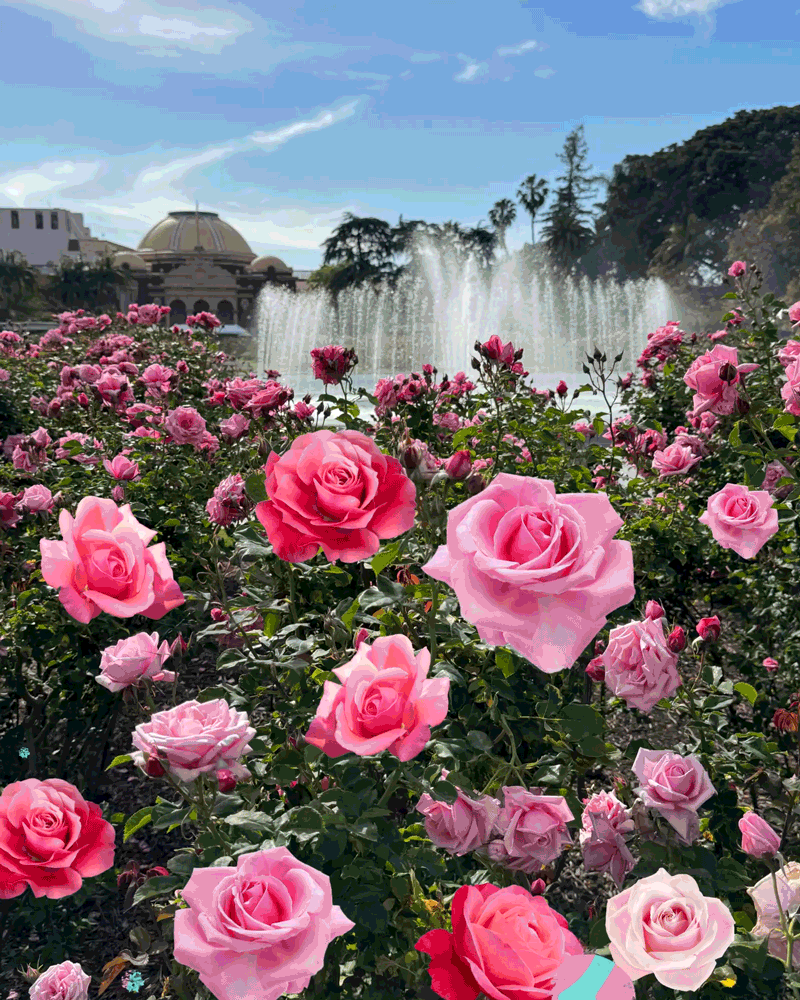Rose Supply Stemmed, So Prices Soar
VENTURA — Smitten lovers in Ventura County will probably have to pay more than usual this Valentine’s Day to woo their beloveds with a dozen red roses.
Florists and growers typically double or triple prices for the Valentine’s Day rose crunch. But this year, many in the flower business say, prices have soared even beyond the normal Valentine’s Day markup.
“This year, there is a shortage on the market, and roses are at a premium,” said Art Gonzales, a sales representative for C & F Flower Growers in Ventura, a vase of broken-stemmed red roses on his desk. “California growers have popped their prices out of sight.”
*
Sixty percent of the U. S. market is imported, according to Jim Krone, executive vice president for Rose Inc., an international trade association of greenhouse growers of fresh-cut roses, based in Haslett, Mich.
The bulk of those imports come from Ecuador and Colombia. But florists are grumbling that a November freeze in Ecuador has gutted the international flower market. In Ecuador’s high elevations, where the roses grow, temperatures plunged below freezing in late November.
In that region, it takes 90 to 120 days to grow a rose, which pushes the effect of the freeze into the Valentine’s market, Krone says. For the period Jan. 1 to Feb. 1, the number of imported roses dropped from 92 million last year to 74 million this year, according to the USDA’s ornamental crops newsletter.
California is the flower basket of the United States, producing 60% of all roses grown domestically. Many of those are grown nearby in Carpinteria and Santa Barbara.
*
Krone says most people prefer domestically grown roses because if roses are grown nearby, they are going to arrive fresher and last longer.
“The foliage should have a nice green color, the stems should be straight, erect, strong enough to hold the flower, and the bloom should be just unfurling,” Krone said. “When you touch and squeeze gently, it should be firm, kind of like a head of lettuce.”
Because imported roses travel thousands of miles via airplane, often they “pop,” or start to bloom before they hit the market, and their stems often cannot support their large, heavy heads.
But despite demand for the home-grown variety, florists say the shortage of roses in the world market has allowed local growers to boost prices and capitalize on the lack of competition.
“For the most part, they had a slow season during the summer; they want to get more during this time of the year . . . and why not?” said Paul Eng, a San Francisco-based market reporter for the newsletter on ornamental crops produced by the U.S. Department of Agriculture.
“When the South Americans flood the market with cheaper stuff, California growers are in a pinch to keep their prices low. Up until Valentine’s Day, they were holding back. . . . This is the time to make it up.”
*
This week, those inflated prices will be passed on to loyal husbands, doting wives, adoring high school sweethearts and swinging singles.
Some local growers and florists refute the notion that the price will rise for the fragrant, silky petaled love symbols.
Barry Opdyke, sales representative for Westerlay Roses Inc. in Carpinteria, said wholesale prices are the same as last year--but would not reveal any numbers.
And Jaqulyn Hughes, who manages Ventura Florist on Main Street, says prices are exactly the same as last year--$65 a dozen.
But other florists are feeling the weather-induced price hike and are resorting to a variety of measures to have supplies of flowers on hand so that no lovers will be without a token of love on Valentine’s Day.
Some, such as Gonzales and his boss, Carlos Romero, of C & F Flower Growers, have risen in the wee hours of the morning to prowl flower stalls in Los Angeles in search of a new supply of cheaper roses.
Others, such as Dee Marchionna of Rosemar in Camarillo, are refusing to raise their prices despite the wholesale increase, hoping instead that because Valentine’s Day falls on a Friday, they will be able to recoup their losses through bigger sales.
*
Still others, such as the Rose Hut in Camarillo, are turning to cheaper roses from out of the country to satisfy demand.
“It is real hard to find a rose at this time,” said Amy Than, who owns the Rose Hut. “If we want to buy, we have to buy two months ahead--from California, Mexico, Carpinteria, Ecuador, Colombia. . . . I don’t know why, but when we go to buy, the price had gone up.”
Still, around Ventura County, the price for a dozen red roses has increased, with the hike ranging from a couple of dollars to more than $10.
Sunshine Flower Shop in Ventura sold a dozen red roses tied with a ribbon in a box for $28 last year; this year, they are $39.
At the shop run by C & F Flower Growers, an arrangement of a dozen red roses was $49.99 last year; this year, they are $62. And at the Rose Hut, prices have risen between $3 and $5 over last year, to $64.99, Than said.
But even in California, buying flowers in midwinter will always cost a bundle.
“That St. Valentine’s Day would be in February and not the middle of July is a problem,” Gonzales said. “That’s when flowers look tallest, most open and most beautiful.”






